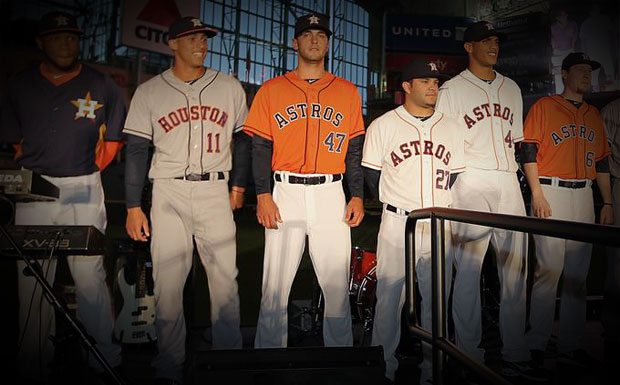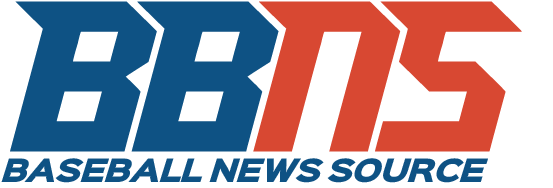 The Miami Marlins have caught a lot of flack this offseason, and deservingly so. Just one off season after opening a new stadium mostly financed by taxpayers, the Marlins have trimmed nearly $80 million off of what was a nine digit payroll and is now down to around $30 million dollars on the active 25 man roster.
The Miami Marlins have caught a lot of flack this offseason, and deservingly so. Just one off season after opening a new stadium mostly financed by taxpayers, the Marlins have trimmed nearly $80 million off of what was a nine digit payroll and is now down to around $30 million dollars on the active 25 man roster.
Giancarlo Stanton appears to be the lone relevant man standing.
But the Houston Astros have flown under the radar during the Miami fallout. Sporting back to back 100 loss installments, the Astros have cut its $60 million dollar 2012 payroll more than in half, and are approaching $25 million dollars for the entire 40 man roster rapidly.
“This trade gives us power, pitching and catching,” Astros GM Jeff Luhnow said. “Three valuable commodities that will help improve our organization.”
So it’s the Astros who are showing the better example of how to build a roster with as little money as possible. In a span of less than two years, the franchise has gone from among the league worst in farm systems to one of the best, acquiring more than eight prospects who can contribute to the team a few years from now.
Recent rumors indicate Bud Norris could be on the block, which would mean another three million dollars off the books. Payroll evaluations fluctuate depending on how you calculate them, but if Norris is moved that could mean under $7 million dollars committed above the league minimum salary to the active 25 man roster, $17 million dedicated to actual players on the 25 man roster and potentially under $25 million on the books for 2013.
While the 2013 and likely the 2014 Astros may be more 100 loss teams in Houston, the franchise may be in good shape for 2015 as they continue to acquire high-level prospects.
The outfield is laced with mostly role players, with Yankees’ castoff Justin Maxwell, a toolsy 30-year-old manning center field. Maxwell is an example of a payroll position casualty, but his outfield partners are both former bigger prospects J.D Martinez and Fernando Martinez are in their mid 20’s now but carried big prospect tags coming through the system. It’s not offensive to have them on the roster, but it’s not indicative of success either.
The bullpen is almost exclusively minimum paid relievers lead by another former Yankee, Jose Veras, who was cut by the team but will look to close for Houston in 2013. If the Astros are going to compete, they will need better relievers, but that doesn’t necessarily mean more expensive, just more talented. It’s not difficult to develop successful relievers and they don’t make much through arbitration compared to other successful positions, so the Astros can continue to save here even if they do find more talent.
The infield is a mix of logic and penny-pinching. Carlos Pena is on a one year contract filling the role of the now necessary DH spot for the recently transitioned NL Astros to the AL West. Brett Wallace was once upon a time a big prospect who has not yet realized his ceiling, and the rest of the infield are pre-arbitration players with varying ceilings.
Jose Altuve the lone Astros all star in 2012 is the second baseman of today for the Astros, and considering his young age and early success, chances are he will have a long-term future with the club. Still, there is not enough ceiling regardless of prospect status for the Astros’ infield to ever compete, but they certainly have the talent in the minor leagues to one day change that.
If Norris is dealt, it leaves Philip Humber as the sole salaried starter above the minimum, making just $800 thousand in 2013. Twenty three year olds, Jarred Cosart and Jordan Lyles represent upside with shots at starting in the rotation this year, but Humber has basically reached his potential as a back-end arm and Lucas Harrell is 28 years old and has never been better than a 3.76 ERA for a non-competitive team in a relatively light-hitting NL Central. Neither pitcher is an embarrassment in the rotation, but may be the top two arms in 2013 for the Astros’ rotation. That’s not serviceable.
So no, this is not the way to build a $25 million dollar major league caliber ball club because many of these players are not major league caliber, either permanently or in 2013, but that doesn’t mean the Astros are without a plan.
A lot of these guys are here as placeholders and the front office has been forthright about that fact. Houston has built itself a promising farm system and if they can get a few players to pan out and make a major league impact, then they can spend on a few free agents to supplement the roster and make a run at the postseason. By doing it from within, it’s a better structure for competing multiple years at a time.
The Astros have not reinvented rebuilding because a $25 million dollar roster is not sustainable or successful, but that doesn’t mean it’s not the right direction for Houston and Luhnow to start building a contender.
